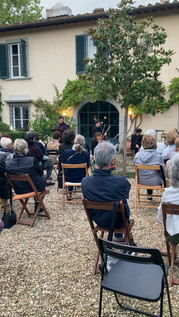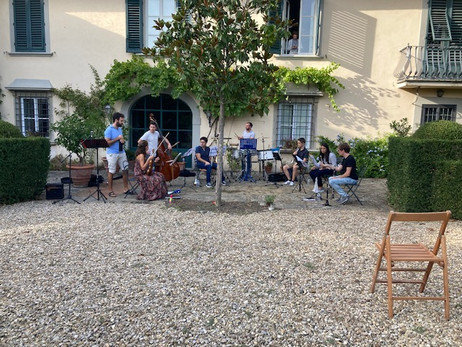2021 / Concert: Histoire du Soldat
- No name
- Oct 5, 2021
- 3 min read

L’HISTOIRE DU SOLDAT
A story to be read, acted and danced in two parts
Igor Stravinsky (1882–1971)
Libretto: Charles-Ferdinand Ramuz
1. The soldier’s march
2. The soldier’s Violin
3. Pastoral
4. Royal March
5. Small concert
6. Three dances: Tango, Waltz, Ragtime
7. Dance of the Devil
8. Small choral
9. Devil’s song
10. Big choral
11. Triumphal March of the Devil
Instruments: Violin, double bass, clarinet, bassoon, cornet (or trumpet), trombone, percussions
Composition: Morges, 6 April – 3 September 1918
First performance: Lausanne, Municipal Theatre, 28 September 1918
Edition: J. & W. Chester, London, 1924
Dedication: Werner Reinhart
Musicians
This young ‘ensemble’ is bound by friendship and shared passion for this composer. It is made up of an actor and seven solo musicians who are mainly part of Tuscan ensembles.
Clarice Curradi Violin
Marco Martelli Double bass
Giovanni Vai Clarinet
Alejandra Rojas Bassoon
Luca Betti Trumpet
Andrea Soldani Trombone
Ivan Pennino Percussion
Niccolò Curradi Actor
During the final year of the Great War, Stravinskij lived in exile in Switzerland, after all his possessions had been confiscated by the Russian Revolution. Deprived of everything but his musical genius, he created this incredible play ‘to be read, acted and danced’, in close collaboration with his friend, writer Charles-Ferdinand Ramuz, who was also a refugee. The story tells of a soldier who returns home on leave where he is tricked by the Devil into giving up his violin in exchange for a book that will make his every wish come true.
“The thought of composing a dramatic performance for a travelling theatre troupe had come to mind several times since the beginning of the First World War,” Stravinskij writes. “The kind of work I was thinking of required a simple, modest number of performers, which would allow for a series of productions to tour in small Swiss towns, and the plot had to be equally clear, so that its meaning could be easily grasped. The subject came to me from reading a short story by Afanasiev about a soldier and the Devil. In that story, what particularly struck me was how the soldier lured the Devil to drink a lot of vodka and then fed him a handful of lead, convincing him it was caviar, so that the Devil greedily ate it and died. Only the outline of the work can be attributed to Afanasiev and myself, because the final text is the work of Ramuz, my great friend and collaborator, with whom I worked carefully, translating my text line by line.”
Stravinskij did not have a hundred-piece orchestra at his disposal, as with his previous compositions, and he had to make use of a limited number of instruments, in order for performers to be able to move easily from one village in Switzerland to another, with the travelling theatre. Nonetheless, this work is characterised by a wide range of sounds and timbre features.
“The choice of instruments for L’Histoire was influenced by a very important event in my life at that time: the discovery of American jazz. The ensemble is reminiscent of a jazz band in that each family of instruments – strings, woodwind, brass, percussions – is represented in its extremes, exploring both high and low registers. Moreover, the same instruments were used in jazz music, except for the bassoon, which, in my opinion, stood for the saxophone.”
L’Histoire is an exceptional fusion of experimental theatre and innovative music, skilfully combining forms and styles as diverse as marches, waltzes, Bachian choral, Argentine tango, ragtime and American jazz.











コメント